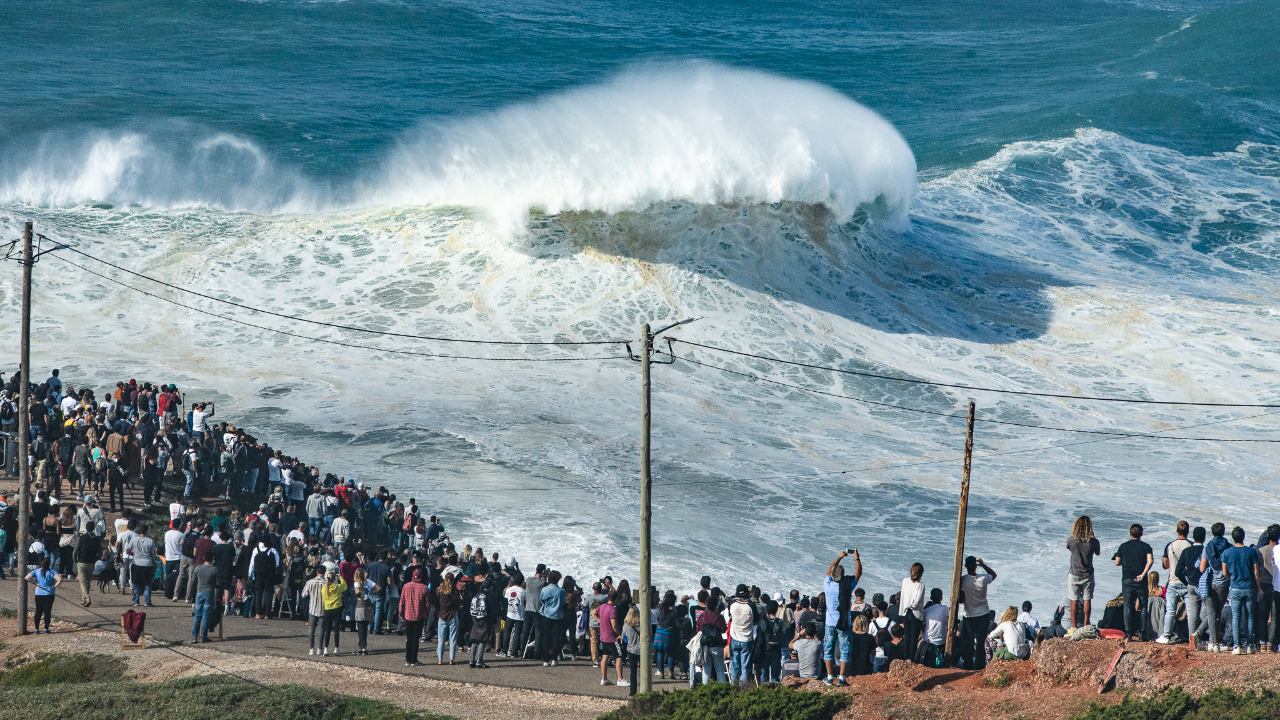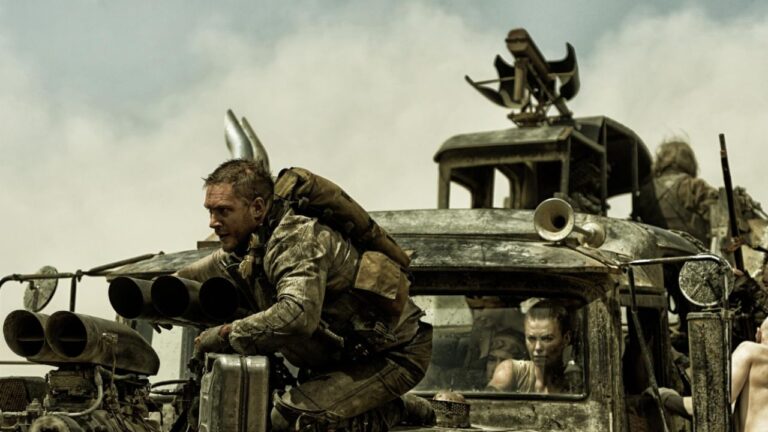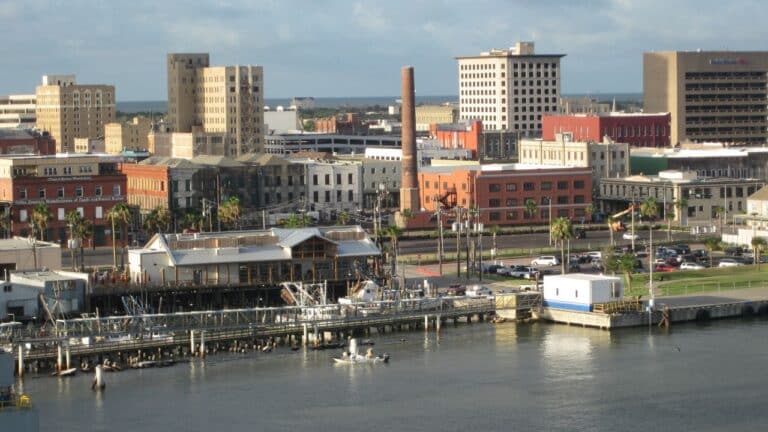12 Most Dangerous Places To Swim Around the World

Are you a traveling enthusiast looking for some unique destinations around the world to go swimming? Just remember not all beaches are created equal and some waters are better left unexplored.
Beyond the tropical, white sand paradise, there might be great white sharks lurking just beneath the surface or fierce rip currents waiting to pull you under. There are even waters like those in Bikini Atoll so radioactive that a swim could be life-threatening.
Some beaches, like those in Malaga, are plagued by stinging jellyfish at certain times of the year. You should know what lurks beneath the waters before diving in, so let’s take a look at 12 of the most dangerous places to swim.
Bikini Atoll, Republic of the Marshall Islands

Bikini Atoll in the Marshall Islands might look like a slice of paradise, but there are some real dangers hiding under its clear blue waters.
From 1946 to 1958, the U.S. used this place for nuclear testing, dropping 23 bombs and leaving a radioactive disaster behind. Taking a dip here isn’t just a bad idea — it’s flat-out dangerous because of the radiation that’s still around.
This stunning atoll is off-limits for your beach bucket list destinations due to its radioactive history.
Amazon River, South America

Thinking of going for a swim in the Amazon River? You don’t need me to tell you it’s not a smart move, but just in case you are unaware, here’s why. This South American marvel is home to piranhas, caimans, and electric eels waiting to give you a jolt you won’t soon forget.
The river’s strong currents and rapids can pose a serious threat to even the best swimmers. There’s also a chance of picking up parasites and diseases from being in the water. It’s best to play it safe and stick by the riverbank.
Málaga Beaches, Spain

The golden beaches of Costa del Sol in Spain look inviting, but swimmers need to beware of the “jellyfish invasion” that hits Málaga’s coast yearly. During July and August, swarms of jellyfish fill the waters. It’s beautiful to see, but getting stung can be painful.
One particularly dangerous species to watch out for is the Portuguese Man-O-War, whose sting can be extremely harmful. With so many jellyfish, during the busy tourist months, swimming here can be a risk not worth taking.
Hanakapiai Beach, Hawaii

There are some beautiful spots around the world that are best admired from afar, and Hanakapiai Beach on Kauai’s Nā Pali Coast is one of them. It might look like paradise but it’s actually one of Hawaii’s most dangerous places to swim.
If you hike the path to the beach you’ll see wooden boards marked with the tragic number of lives lost to the powerful ocean. The deadly combination of strong rip currents and unpredictable high surf makes this beach extremely dangerous.
There are no lifeguards, so you’re taking a huge gamble entering these waters. Stick to one of the many safer beaches throughout Hawaii.
Gansbaai, South Africa

This body of water in South Africa is well known for its shark cage diving. Thrill seekers set their sites here even though it’s some of the most dangerous waters and has one of the highest populations of great white sharks.
Recent reports show an increase in great white activity around Cape Town’s beaches. Efforts are being made in some beach areas to protect the vulnerable, but in Gansbaai, swimmers are left to fend for themselves with no lifeguards around. Stick to the cages if you plan on entering these waters; it’s not safe to swim outside of them.
Boiling Lake, Dominica

The threat of this place is all in the name! Hot springs can be amazing and therapeutic for the body, but some are dangerously hot. Dominica’s Boiling Lake, the world’s second-largest hot spring, is a prime example.
Did you know that the water’s edge can reach 180° to 197° Fahrenheit? The center is so hot that no one can reach close enough to measure it due to the steam and heat from a nearby volcano. Swimming here is off-limits, and I don’t think you need to ask why. This natural wonder should be enjoyed from a distance.
The Great Blue Hole, Belize

This massive ocean hole is 984 feet wide and 410 feet deep and is the world’s deepest underwater sinkhole. Even though it’s extremely dangerous, it was made famous by explorer Jacques Cousteau in 1971.
It’s one of the top diving spots in the world, but the powerful swirling vortexes can trap anything — or anyone. With it being 410 feet deep if something were to go wrong it can become fatal way too quickly. If you are not an expert diver, don’t even think about swimming here.
North Beach, Portugal

Imagine an 86-foot wave crashing into the coast — truly breathtaking. At Praia do Norte in Nazaré, Portugal, you can see this natural spectacle. But while it’s mesmerizing to watch from the Farol viewpoint, it’s a different story in the water.
The waves here, driven by a 16,404-foot-deep submarine canyon, make swimming extremely dangerous. The powerful currents and unpredictable waves have led to numerous drownings and near-death experiences. It’s a spot for thrill-seeking surfers, but for most, it’s best to stay onshore and admire from a safe distance.
Cape Tribulation, Australia

Cape Tribulation in northern Queensland, Australia, is not safe for swimming. The waters are home to jellyfish, venomous snakes, and crocodiles.
There are also dangerous animals on land, you take the risk of coming face to face with cassowaries. They are large flightless birds related to emus and can weigh over 160 pounds. These birds can be very aggressive and inflict serious injuries if provoked so they are not an animal you want to pick a fight with.
Chowpatty Beach, Mumbai

Mumbai’s Chowpatty Beach is one of the world’s most polluted. You won’t want to be swimming in these waters anytime soon with all the garbage that’s tossed there. The sewage from the city travels into the water as well, creating a highly contaminated environment.
Although volunteers try to help clean the beach, it’s just too overwhelming and the pollution persists. According to the U.S. Environmental Protection Agency, swimming in polluted water can lead to illnesses like diarrhea and sore throats, and poses even greater risks for children, the elderly, and those with weakened immune systems. For your health and safety, you might want to skip these waters and avoid all that garbage!
New Smyrna Beach, Florida

New Smyrna Beach on Florida’s Space Coast has all the Caribbean charm with its dunes, waves, and sunshine, but it’s known as the “Shark Bite Capital of the World.”
There’s a high number of yearly unprovoked shark attacks, and while most bites aren’t fatal, they’re still a serious concern. Surfers still take to the waves despite the dangers, but if you’re looking for a family beach day try enjoying another destination to keep everyone safe.
Haina Beach, Dominican Republic

If you’re planning a holiday to the Dominican Republic anytime soon be sure to avoid Haina beach. It’s a far cry from the island’s picturesque paradise. Known as “Dominican Chernobyl,” it has some of the worst lead pollution in the world.
Many of the locals suffer from lead poisoning because of these contaminated waters. The pollution comes from factories in Bajos de Haina, which dump waste into the waters and leak harmful materials into the soil. Even the air here is hard to breathe, and swimming is out of the question. To keep everyone safe stick to the pristine shores of Las Galeras instead.





